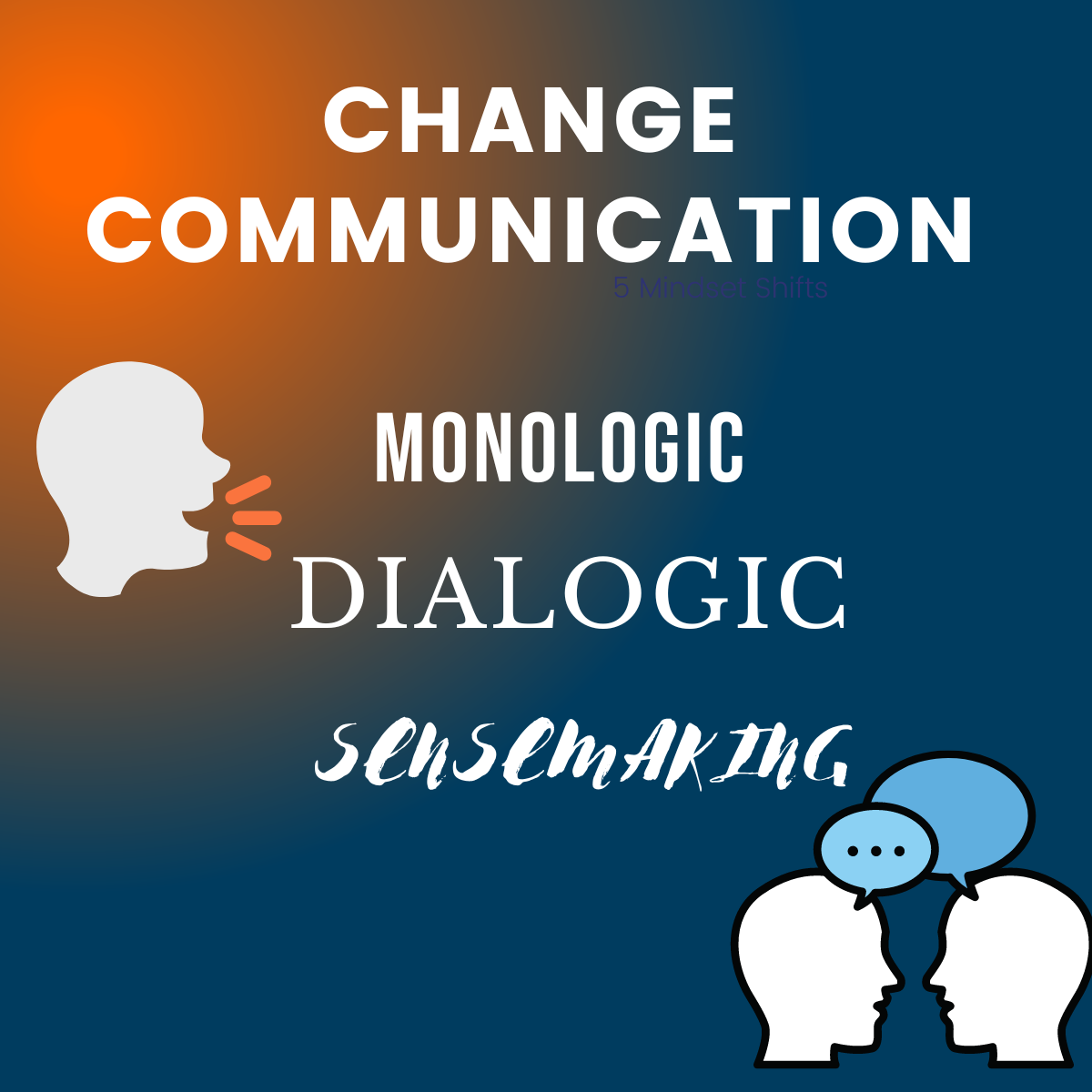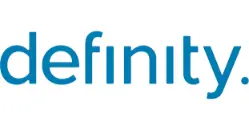For many managers and leaders, change communication means Fact Sheets, FAQs, Roadshows and Manager Talking Points. Good change communication means timely information that is fed to the troops providing a consistent message and clarity in meaning. And if that’s the worst we get of change communication, then we are probably not doing so badly.
But in our Agile Change Leadership certificate program we advocate for a broader understanding of change communication. Change communication is more than just a tool to introduce the new system, structure or values. Change communication represents a mindset that sees organisational change as the result of a series of communicative events. The communication within the organisation creates the change we need to make.
Monologues and Dialogues
Organisations can be considered as consisting of monologues or dialogues. Monologic change communication is identified as top-down, one-way, instrumental communication. When the change communication is monologic, we speak with the same voice, shared understanding, and the power lies with those who make the decisions about the change.
On the other hand, dialogic change communication is constructive. Relationships matter, different perspectives matter, and power is shared among all within the organisation. The front line employee has as much voice as the CEO. The nature of dialogic communication is about creating new meaning, processes, or products out of the conversations.
As described above, both terms monologic and dialogic change communication suggest purposeful and deliberate uses of formal communicative action within organisational change. However, we can’t forget the informal communication of change, or the conversations that go on in the background.
Introducing sense-making.
Many conversations of change occur through the grapevine, by the water cooler, and within the corridor conversations. How employees individually make sense of change can dominate the formal narrative of change, and this sense-making produces a ‘background talk of change’. The background talk can serve as a barometer of how receptive the employees are to changes being introduced.
In leading agile change you need to consider that your communication includes monologic communication, dialogic communication and the informal background of change.
Of course in considering a broader understanding of change communication, we add complexity to the change leader’s efforts. Let’s face it, preparing FAQs and Talking points is so much easier.
Reducing the complexity of change communication can be assisted by asking the question: ‘What is the purpose of your communication ?’.
‘What is the purpose of your communication?’
The simplest answer to this question comes from the age old dialectic of change and stability.
What do you want to do? Do you want to create more change with your communicative efforts?
Or do you want to use communication to create some stability amongst the change program.
The use of Fact Sheets, FAQs, Roadshows and Manager Talking Points create stability. In a time of uncertainty, these tools provide some information that can reassure, educate, and clarify the details on what the employee is unsure of.
Managers and leaders seek to stabilize the organization by communicating vision and educating employees of the benefits of the intended change. It is reflected in speech acts or written directives that suggest a one-way direction. This unilateral trajectory assumes a high degree of planned change, and that the manager or change communicator can control the message.
However, these are not the communication tools that assist you in creating further change. For this purpose you have employee forums, collaborative platforms, and a communicative culture that values listening, and rejects hierarchical structures. These are the channels to creating curiosity, sense-making, and unearthing fear or cynicism about the change.
It’s not easy though. Dialogic communication is distinctly different to the usual patterns of management communication. It represents the ability to engage with genuine care and respect, to generate reflective discussion and speak authentically and is seen to have positive impacts on innovation and organizational change.
This dialogic approach assumes that the managers and employees possess the requisite competences to carry the dialogue. It goes beyond strong interpersonal skills, it also means high emotional intelligence and managers willing to suppress status and ego. You need to be able to listen, to be empathetic, cognizant of differences in order to adopt communicative practice that creates further change. All of these attributes are covered in our module “Personal Qualities’ in the Agile Change Leadership Certificate.
Think your leadership communication could be more effective?
Head over to our Agile Change Leadership Certificate to see if it is for you!


































